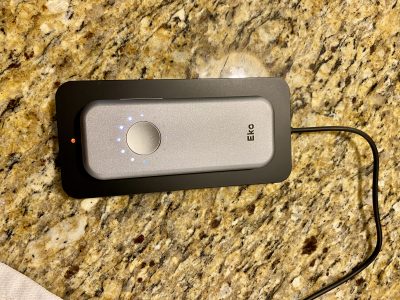and is reduced to using unapproved US epinephrine (oh, they’re exactly the same drug, by the way):
STOCKS of an essential drug used in life saving situations have been depleted at Middlemore Hospital.
Ampoules of the Ministry of Health approved adrenalin 1:1000 ran out late last week.
Middlemore is not alone in its predicament which may put patient safety at risk says the New Zealand Medical Association (NZMA).
Adrenalin is an essential drug used in emergency situations such as life-threatening allergic reaction and cardiac arrest.
Doctors will be able to use an alternative supply of adrenalin from America, but must gain consent from the patient, as it is not ministry approved says Counties Manukau District Health spokesperson Lauren Young.
That will be an interesting conversation:
NZdoc: ‘Hello, I see you’re about to die without our New Zealand approved adrenaline. I suppose we could give you the American version, which they call ‘epinephrine’ and does exactly the same thing, but because it’s not approved I need your permission to give it to you”.
patient: choke/gasp/wheeze
NZdoc: “I’ll record that as a yes; nurse, give the unapproved epinephrine, please”.
And, that reminds me that we have these revolving shortages of medicines you wouldn’t think of as being hard to get: injectable compazine until recently, this month it’s Bicillin LA, a long-acting penicillin shot. It’s penicillin for goodness sake, but we’re out. I never know why we have shortages like this, but they crop up all the time.




You should see the way they’re reporting it on the news, like “Oh no, we could be given the substandard alternative drug because somebody didn’t plan ahead!” As if there’ll be people dropping like flies…
Not that I live there or anything.
It’s actually not the first time this has happened. For some reason the NZ authorities have quite a hard time maintaining the supply of adrenaline, and once or twice diazepam too.
Odd position for the NZMA to take though. Maybe we should start a rumour about having run out of paracetamol, and having to use acetaminophen?
This sounds like nothing more than bureaucratic bumbling, either failing to inventory and order or failure to properly budget and program expenses. The only shortage is probably in their inventory and distribution supply chain, probably held up because they weren’t paying their bills.
Manufacturer shortages are pretty common with these non-patent medicatons. Since they are off-patent, anybody can manke them, which means that manufacturers wind up needing to price them with very low profit margins in order to be competitive. A classic race to the bottom. But then the drugs wind upbeing relatively unprofitable to manufacture and market, so the number of manufacturers diminishes and the amount of drug being produced diminishes. Some old-school drugs fall out of production altogether.
So you can’t get compazine at $0.35/dose, but Zofran will always be available at $50/dose.
God bless capitalism.
Heck, recently our hospital had a shortage of Lymphazurin Blue, the dye we use for breast cancer operations. Basically, we inject the dye into the breast near the tumor; the dye gets taken up in the lymphatic vessels and deposits itself in the first lymph node the tumor would “see” if it traveled beyond the breast lump where it started. We then biopsy that lymph node. Usually we use both a short-lived radiotracer and the blue dye to locate this node, because using both significantly increases the odds of finding the right node. Without Lymphazurine Blue, my chances of not being able to find the correct node go down significantly (although they’re still quite good).
I later found out that this was a widespread shortage; I never found out the reasons.
Drug shortages inconvenience patient, doctor, and pharmaceutical company. And it’s not only cheap generic meds that are in short supply.
The FDA has a web site that lists current drug shortages and reasons for them. It is kept reasonably up-to-date.
Here it is: http://www.fda.gov/cder/drug/shortages/
Frequently, the FDA is responsible for the shortage, so it’s only reasonable that they provide the reason.
And, Orac, that link lists the reason for the shortage of Lymphazurin Blue. (Don’t other dyes work as well along with lymphoscintigraphy?)
Bicillin has been out for some time. For an ER doc with a poor-patient-followup population, that’s pretty close to an essential drug.
Personally, I use the hell of out Bicillin LA… and I’m very irked that it’s not available. Just tie my hands…
Bicillin is not cheap although you’d think it would be. Right now my supplier is showing Bicillin-LA 1.2 million units at $62.60 per dose. Heck a gram of ceftriaxone is now only $23. Don’t ask me why the Bicillin is so expensive, you’d think they could mix it up pretty easily. Bicillin-CR is expensive too.
Shadowfax, god bless capitalism, indeed. Reserpine is infrequently used in equine practice, but it is an unlikely but indispensable drug used for horses who require long-term layups for injuries. Recently, the vet practice I worked for stopped carrying it because it became so difficult to get a hold of.
We use reserpine to take the edge off of horses who become dangerous to either themselves (stall rest does not help injuries if they are bouncing off the walls) or people when confined for months due to an injury — an otherwise quiet horse can become a rearing, bolting lunatic given enough pent-up energy. Reserpine is good because it is given in the feed once a day. Fluphenazine depot injections can also be used, but if there is an adverse reaction, you are stuck with it for a couple weeks, and it can cause raging diarrhea. Acepromazine does not last very long (a few hours) and may cause penile paralysis in male horses.